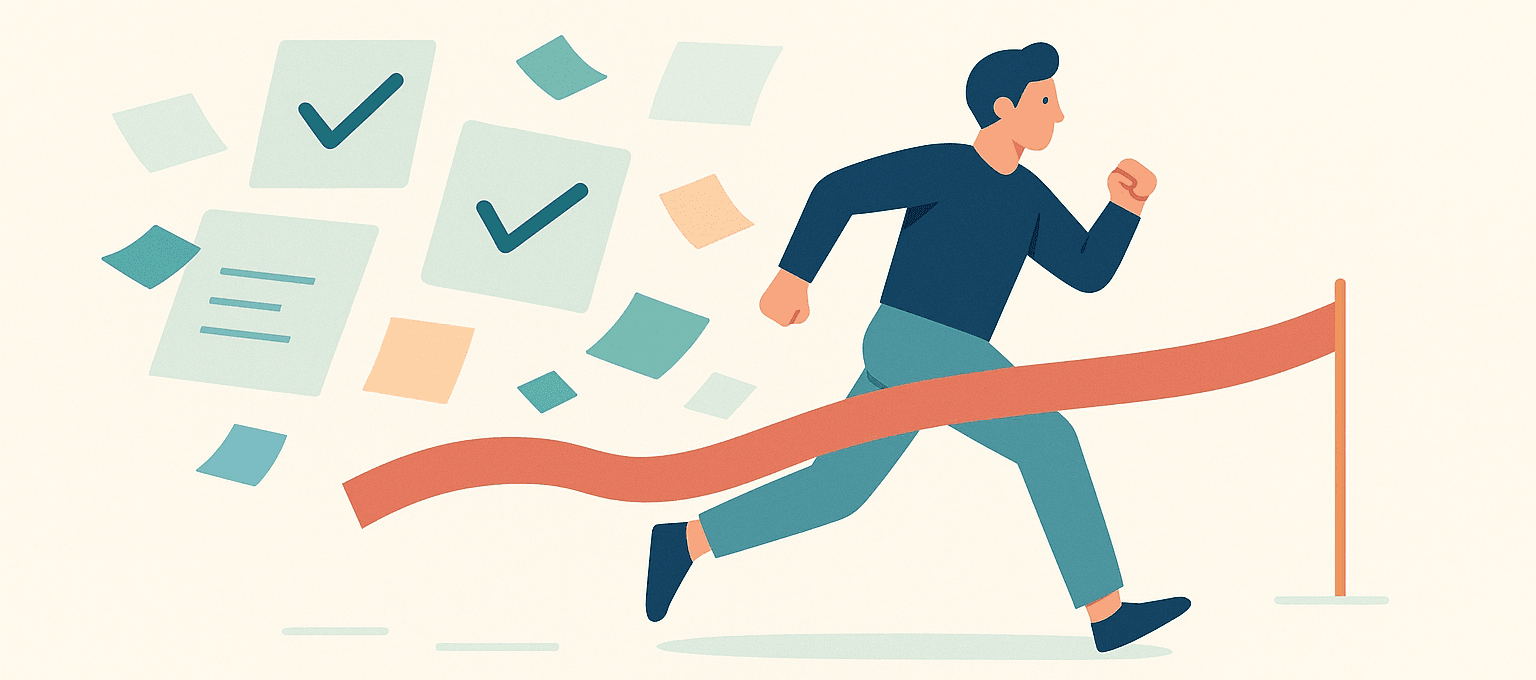
How to Actually Finish What You Start: Focus Strategies That Stick
You start with energy, a great idea, and a plan. Then… nothing. You get distracted, overwhelmed, or simply lose steam. The truth? Starting is easy. Finishing takes a system.
If you often jump between tasks or leave half-built projects behind, pay attention to these tips, and pick the one you think you can apply in your life today. Below are six focus strategies designed to help you stick with what you start, all backed by behavioral science and real-world techniques.
1. Use Implementation Intentions (If–Then Planning)
One of the biggest reasons we don’t finish things is we haven’t clearly decided when and where we’ll do them. Dr. Peter Gollwitzer, a psychology professor at NYU, coined the concept of implementation intentions — a strategy where you plan specific actions in the form of “If X happens, then I’ll do Y.”
For example:
“If it’s 7 PM and I’ve had dinner, then I’ll write for 30 minutes.”
This turns vague intentions into concrete commitments, making it easier for your brain to detect when it’s time to act. Studies have shown this method significantly increases goal completion rates across everything from exercise to studying.
2. Break It Down into Finishable Chunks
Big goals stall because they feel endless. You can’t “write a book,” but you can “write a rough outline of chapter one.” This idea echoes David Allen’s Getting Things Done framework, where every project should be reduced to the next physical action — something doable in a single sitting.
Just like a designer or artist who struggles with completing their work, a smart strategy is to commit to tiny daily actions — even if it’s just drawing a single line on the canvas or writing one sentence on the screen. These small contributions build momentum. And since our brains crave visible progress, these micro-wins accumulate into big results over time.
3. Set a Visible Finish Line
Humans are naturally goal-driven — but only if we can see the goal. One of the simplest ways to finish more is to define clearly what “done” looks like. Is it hitting a word count? Completing 3 focused hours? Publishing a piece?
Visible finish lines give your brain something to aim for, and they prevent perfectionism from creeping in and moving the goalposts.
Try this: before starting any task, write down in one sentence what “finished” will mean. Keep it realistic and doable, do not sabotage your brain and potential growth by defining impossible tasks.
4. Use the Zeigarnik Effect to Your Advantage
The Zeigarnik Effect, named after psychologist Bluma Zeigarnik, suggests that unfinished tasks stay more active in our minds than completed ones. That’s why it’s easier to keep going on something once you’ve started — your brain wants closure.
Use this to your advantage by starting small even when you’re not motivated. Open the document. Write one sentence. Once your brain gets a foot in the door, it often pulls the rest of you in behind it.
If you’re working on a digital project and can’t dive in yet, prepare the workspace: create the folders, open a file and name it, log into the platform, or install the needed tools. Setting up these first steps lowers resistance and primes your brain for execution. Next time you sit down, you won’t be starting from scratch — you’ll be stepping into momentum.
5. Limit Open Projects (The Focus Funnel)
Productivity expert Rory Vaden, in his book Procrastinate on Purpose, explains the Focus Funnel — a model for filtering tasks based on whether you can eliminate, automate, delegate, or delay them.
The idea is that we often start too many things at once. And when everything is a priority, nothing gets finished. By limiting your active open projects — say to 3 at a time — you reduce cognitive load and preserve mental energy for actually crossing the finish line.
It’s just like when you decide to start reading more: you get excited, browse for hours, and end up with five new books. Suddenly, the goal feels overwhelming. You flip between them, never finishing one, and your desk turns into a graveyard of good intentions.
Pick one, finish it, then move on to the next.
Single-tasking isn’t boring — it’s how things actually get done.
6. Build the Habit of Finishing (Even Small Things)
Like any muscle, your ability to finish improves with training. Every time you complete something — even small, low-stakes tasks — you reinforce the identity of someone who follows through.
This is where routines and rituals come in. For example, you might end each day by completing a 10-minute task, cleaning your space, or logging your progress. These aren’t productivity hacks — they’re finishing reps that rewire how your brain approaches tasks.
Final Thought:
Finishing isn’t about motivation — it’s about structure, clarity, and trust in your own follow-through. The more you deliberately practice finishing (big and small), the more it becomes part of how you work. Start small, get clear, and keep going. Focus Guild is here to help you stick the landing.
The key to everything? Start small. As you progress, your skills and capacity will naturally demand more — and you’ll be ready to deliver.